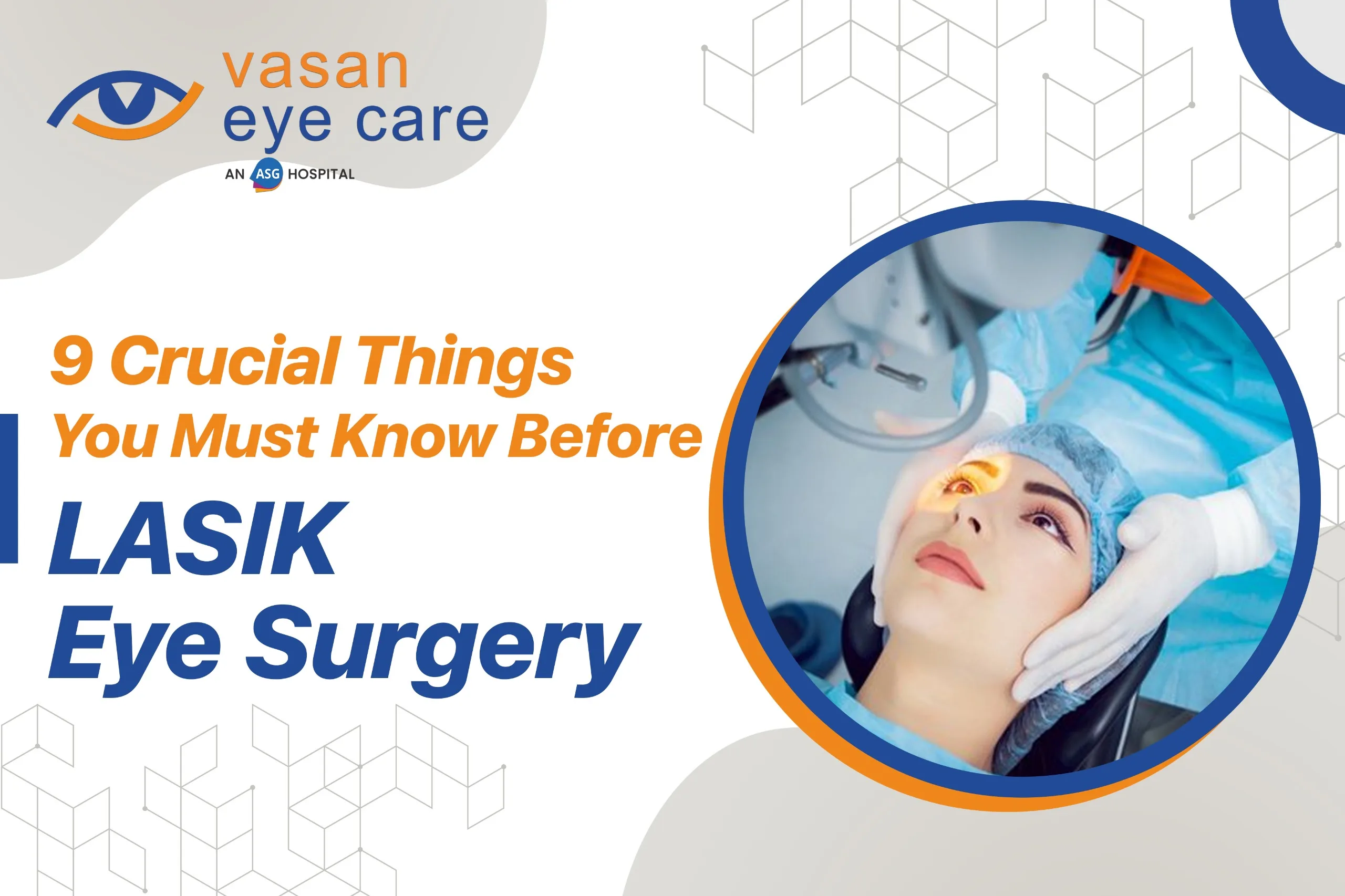LASIK eye surgery has become a way to freedom for people tired of glasses and contact lenses. The idea of waking up and immediately seeing clearly without fumbling for your glasses is undoubtedly appealing. Over the years, LASIK has developed into a fast, safe, and highly effective vision correction surgery. However, like any medical procedure, it is not a miracle answer for everyone, and should not be rushed.
If you are considering LASIK Surgery, here are 9 key things you should consider before committing:
1. Not Everybody is a Suitable Candidate for LASIK
This is the first and foremost thing to remember. LASIK has an excellent success rate, but not suitable for everyone. To be a suitable candidate for LASIK, you should have healthy eyes and meet specific criteria. If you experience the following, you may not be a suitable candidate for LASIK:
- You have thin or irregularly shaped corneas
- You have severe dry eye syndrome
- You have certain medical issues like autoimmune disorders (e.g. rheumatoid arthritis, lupus)
- You are pregnant or nursing
- You have unstable vision because of diabetes or other medical issues
Before surgery, a surgeon will do a full eye exam to assess whether your eyes are appropriate for the surgery or not. You can have other options like PRK or an intraocular lens.
2. You Need to Have a Stable Prescription
For LASIK, your vision prescription needs to be stable for a minimum of 12 months, depending on your age and health, which could be up to two years. If your prescription is changing quickly, these are indications of changes inside your eyes, meaning your vision could change again if you try to correct your vision too early. This is important for younger people or for those with progressing myopia.
3. You are Still Going to Need Glasses (Sometimes)
The purpose of LASIK is to decrease your dependency on glasses and contact lenses, not eliminate them. Most people end up with 20/20 vision or better, but some still need reading glasses as they age due to presbyopia after their 40s. Presbyopia is a natural loss of the ability to focus on objects near you.
4. The procedure is quick, but it’s still surgery
The LASIK eye procedure is quick (takes only 10-15 minutes per eye) and painless. Numbing drops are placed in the eye to facilitate the process. The procedure involves creating a thin flap in your cornea, using a laser to cut the underlying tissue, and then replacing the flap afterwards. Recovery is typically quick; many patients recover within 24 hours, but it is important to follow your surgeon’s instructions so that you don’t experience complications.
5. Dry eyes are a common side effect
One of the most common side effects after LASIK surgery is dry eyes. This could be due to the nerves that typically signal tear production being cut during the surgery. Most people experience symptoms of dry eyes that improve gradually over the following weeks or months. Your surgeon may suggest lubricating drops or some other treatment.
If you suffer from dry eye syndrome before surgery, you must address the dry eyes before surgery, as LASIK can make your dry eyes worse.
6. Your Night Vision May Be Temporarily Affected
It is common to notice some glare, halos, or starbursts surrounding lights at night after LASIK surgery. These visual side effects should be temporary and vision should improve as your eyes heal. However, in some instances–especially for individuals with large pupils–these visual disturbances can persist.
Talk to your surgeon about your risk, especially if you do a lot of night-time driving or work in low-light situations.
7. Some Lifestyle Limitations
Although recovery from LASIK is rapid, it does require a few temporary lifestyle limitations. After your surgery, you will want to avoid:
- Eye makeup for about one week
- Swimming, hot tubs, or any activities in water for at least two weeks
- Rubbing your eyes (could dislodge the healing flap)
- Dusty or smoky environments
- Heavy exercise for a few days
Following your post-operative care instructions helps you to have a smooth recovery and reduce the risk of complications or infections.
8. Risks associated with LASIK surgery
While LASIK is considered very safe, it is still an operation and carries risks, as with any surgery. Risks may include:
- Infection
- Flap problems (for example, dislocation or improper healing)
- Under-correction or over-correction
- Persistent dry eye
- Visual aberrations (halos, double vision)
Following all pre-operative and post-operative care reduces these risks.
9. Results can be transformative, but it’s important to maintain realistic expectations.
Most LASIK patients experience excellent results and report improved quality of life. However, managing your expectations is important. Extreme vision does not last forever with LASIK. Some people need enhancements or glasses later in life after their vision changes with age.
Conclusion LASIK can be one of the most satisfying medical procedures for higher-order estimates, if you qualify. But it isn’t something to jump into after you see a flashy advertisement or a great sale. Do your research. Talk to an experienced or skilled eye specialist at VASAN Eye Care and make sure you are making a decision based on facts rather than presumptions.



